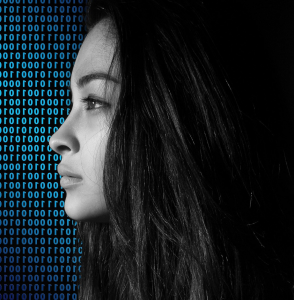Teacher and Student Roles
Teacher Roles and Responsibilities
Digital learning, whether synchronous or asynchronous, shifts teaching and learning from a teacher-centered environment to a student-centered environment.
The constructivist theory that supports asynchronous learning requires the teacher to become a facilitator and, in some cases an instructional designer, if the school does not provide all of the lesson plans and course materials within a school-based network or program.
There are three common attributes to successful asynchronous learning communities:
- The Teacher as Facilitator—the learning community has an active facilitator (teacher) who monitors, guides, and nurtures the interactions of students. Unguided learning communities typically fail to pass the second stage of group participation outlined above, or fail to reach learning objectives because student engagement, critical to digital learning, does not take place. Students become distracted from the intended purpose of the lesson or course and their participation falls, or their contributions drift away from a focus on the course content.
- Knowledge through Interaction—many teachers approach digital learning as a one-to-one proposition with their students and because of this, learning suffers or does not occur at all. Even though students are not meeting at the same place and at the same time, student interaction and parental involvement are critical in support of creating new knowledge. The teacher, rather than acting as instructor or disseminator of knowledge, recognizes the value of group interaction in engaging students to make meaning from the course materials and the discussion they promote. By developing a lesson plan that promotes online relationships and contributions of students to a group forum, the teacher recognizes that knowledge is an individual construct that is developed through interaction with others. If participation in a group environment is difficult, even using a buddy program, like you would in the classroom, will improve learning and retention.
- Entertainment (play while learning)—students in a digital environment will only learn if they are engaged. If they are experienced consumers on the Internet, they already have developed preferences and habits related to content, especially visual content. Finding ways to let students play within the discourse and express themselves will be highly beneficial. Communities that insist on stringent adherence to etiquette and protocols do not provide room for social development. Rather than enriching discourse on the targeted topic with a lesson or course, this negatively impacts group development and individual comfort levels, decreasing involvement and commitment.
(adapted from Waltonen-Moore, et al.)
Student Roles and Responsibilities
 Students must take responsibility for their own learning. They must become proficient with the technology required for the course, learning new methods for communicating with their peers and the teacher, and strengthen their interdependence through group collaboration, even though they may rarely participate at the same time in the same space with their peers. Students may make private arrangements with their friends or mentors to participate simultaneously in the learning, and then publish their work to the group. This can happen independently or at the suggestion of the teacher.
Students must take responsibility for their own learning. They must become proficient with the technology required for the course, learning new methods for communicating with their peers and the teacher, and strengthen their interdependence through group collaboration, even though they may rarely participate at the same time in the same space with their peers. Students may make private arrangements with their friends or mentors to participate simultaneously in the learning, and then publish their work to the group. This can happen independently or at the suggestion of the teacher.
In some cases, teachers establish buddy programs in a digital learning environment in order to pair students who are proficient in the use of digital tools and the Internet with students who are less familiar with technology and have fewer online experiences. In facilitating their work as a subgroup within the class, the teacher still provides direction in order to ensure focus on learning as the priority, knowing the inevitability that the more proficient student will present his or her preferences for content along with advice and assistance on accessing content.
Parental Involvement
The involvement of parents plays a significant role in the participation of many students. It supports the constructivist approach to teaching and learning.
Constructivism is an approach to teaching and learning that holds that people actively construct or make their own knowledge and their reality is determined by the experiences of the learning (Elliott et al., 2000). Students are “active, knowledge-searching creatures that transform and interpret experiences using developed biological and mental structures. They assimilate new knowledge by producing cognitive structures that are similar to the experiences they are engaged in. They then accommodate themselves to these newly developed knowledge structures and use them within their collection of experiences as they continue to interact with the environment.” (Gold, 2001)
The very fact that almost every student engaged in digital learning does so from home underscores the importance of parental involvement and support in constructivist learning. Some instruction to parents about how to support their children’s learning is not only appropriate, but recommended.
One of the best ways for children to learn at home is to have a conversation with their parent or parents, sharing thoughts and ideas, and asking questions. For younger children, this alters the notion that adults are “all-knowing” and shows them that their ideas matter, which increases engagement and willingness to learn.